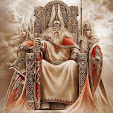Karate is a martial art developed on the Ryukyu Islands in what is now Okinawa, Japan. It developed from the indigenous martial arts of Ryukyu Islands (called te) under the influence of Chinese martial arts, particularly Fujian White Crane.
Karate is nowpredominantly a striking art using punching, kicking, knee strikes, elbow strikes and open hand techniques such as knife-hands, separ-hands, and palm-heel strikes. Historically and in some modern styles grapling, throws, joint locks, restraints, and vital point strikes are also taught.
A Karate practitioner is called a karateka. Karate developed in the Ryukyu Kingdom. It was brought to the Japanese mainland in the early 20th century during a time of cultural exchanges between the Japanese and the Chinese.
It was systematically taught in Japan after the Taisho era. In 1922 the Japanese Ministry of Education invited Gichin Funakoshi to Tokyo to give a karate demonstration. In 1924 Keio University established the first university karate club in mainland Japan by 1932, major Japanese universities had karate clubs.
In this era of escalating Japanese miliarism, the name was changed from "Chinese hand" or "empty hand", both of which are pronounced karate, to indicate that the Japanese wished to develop the combat from in Japanese style. After World War II, Okinawa became an important United States military site and karate became popular among servicemen stationed there.






